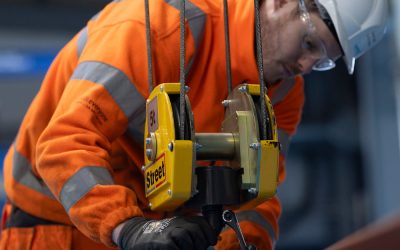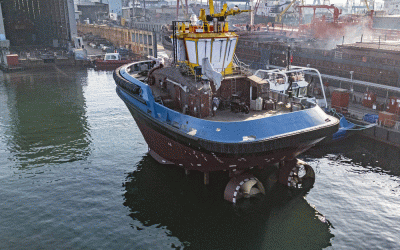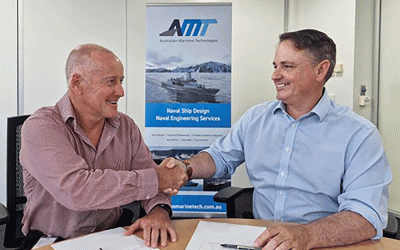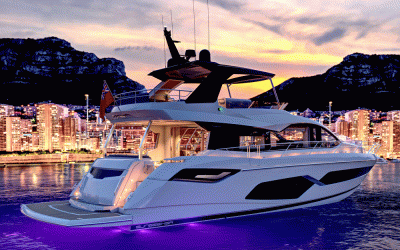ABB and Singaporean shipbuilder Keppel Offshore & Marine (Keppel O&M) have concluded remote-pilot trials of a pusher tug in the Port of Singapore – and the partners are confident that this could precede a wider roll-out of remote and autonomous workboats within this busy location. The trials saw personnel remotely steer the 32m Keppel Smit Towage tug Maju 510 from a command centre at the Port of Singapore Authority’s Maritime Innovation Lab, using a combination of joystick controls and ABB technology.
The idea is not so much to fully remove the crew from the vessel, but to enable onboard personnel to rest up during tedious transits and routine tasks, so that they are fully alert and energised when their physical presence is required. And, beyond the bustling environment of the Port of Singapore, the trials are also hoped to serve as a demonstrator to the marine sector as a whole.
The connection between Maju 510 and the shore-based station was enabled by an ABB digital package that included two key products. The ABB Ability Marine Pilot Vision solution was used to integrate the tug’s navigational data, including radar, compass, GPS and ENCs. All of this data was then compressed on board the vessel; streamed, over a secure network, to the shore command centre; and decompressed for the personnel to access via various views.
The shore staff then used the ABB Ability Marine Pilot Control tool to control the vessel, both automatically and manually, through a single system, “enabling the same controls on board and on shore, as well as a secure command transfer between the two”, Dr Kalevi Tervo, corporate executive engineer and global program manager at ABB Marine & Ports, tells Ship & Boat International. Throughout the trials, the connection between tug and shore was maintained at a distance of approximately 10km. “There was a particular focus on vessel manoeuvring, including changes of speed and course and turning circles, as well as typical collision avoidance scenarios with moving and stationary objects,” Tervo says.
The Maju 510 project has been funded by the Maritime and Port Authority of Singapore as part of the Singapore Maritime R&D Roadmap 2030 programme. ‘Phase Two’ of the project will commence later this year, and will see the tug undertake autonomous collision avoidance tasks while under remote supervision, including the use of AI-based analytics and amalgamated onboard sensor data.



